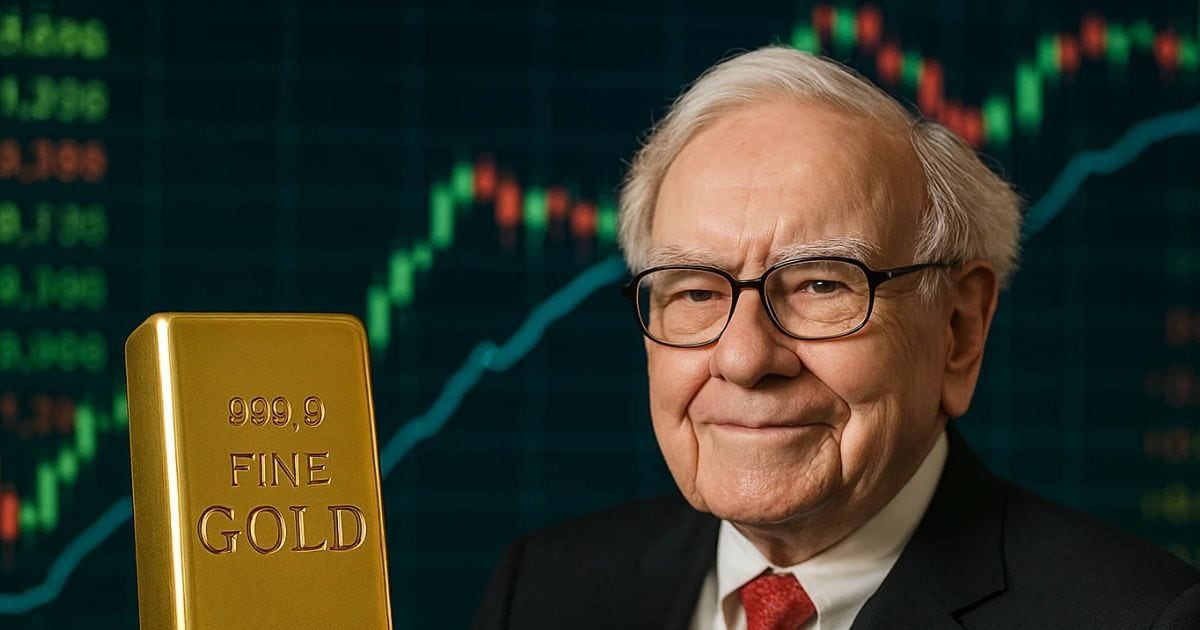Warren Buffett’s name is synonymous with long-term investing success. Often called the “Oracle of Omaha,” Buffett has built an extraordinary fortune of around 140 billion dollars, making him one of the richest individuals in the world. His investment philosophy is studied by investors globally, yet there is one asset class he has never truly embraced gold.

For decades, Buffett has made his position on gold crystal clear. He believes gold has no productive capacity and therefore does not align with his value-driven investing approach. While gold is widely regarded as a safe haven asset during times of uncertainty, Buffett argues that its value is driven primarily by fear fear of currency collapse, dollar weakness, and geopolitical instability rather than by the ability to generate income or growth. His only notable investment in gold-related assets was a short-lived stake in Barrick Gold, a mining company, which he exited within six months.
Buffett’s criticism of gold is not new. Back in 2011, he told shareholders that gold’s two major shortcomings are that it is “neither of much use nor procreative.” He has often contrasted gold with productive assets like farmland or businesses, which can generate income, yield, and long-term growth. According to Buffett, even if you held one ounce of gold for eternity, you would still own just one ounce nothing more.

Over the years, gold’s performance has been mixed. In 2011, when Buffett famously compared gold with farmland, gold was priced at around 1,750 dollars per ounce. Today, it trades near 3,350 dollars, meaning it has doubled in value over fourteen years. That may sound impressive, but it works out to only about five percent annualised returns. In the same period, US stocks have delivered over fourteen percent annually, far outpacing gold. Between 2011 and 2020, gold actually experienced long periods of stagnation, only regaining its 2011 price in 2020. The sharp rally over the past five years, with gold rising over ninety percent, has rewarded investors recently but it also proves Buffett’s point that gold tends to have long, dormant phases followed by sudden bursts of activity.
Buffett’s scepticism is rooted in his belief that buying gold is an emotional decision tied to fear rather than rational value assessment. He notes that gold prices often rise when more people become fearful, creating a cycle where higher prices attract more buyers simply because others are buying. This “bandwagon” effect, according to him, is not a sound basis for wealth creation.

Recent global events have reignited interest in gold. Fears over the US dollar’s stability, rising US debt interest costs, and credit rating downgrades have pressured the dollar and supported gold prices. The dollar index has slipped nearly four percent in 2025, making gold more attractive in international markets where it is priced in dollars. Even with these developments, Buffett remains steadfast in his view that gold does not belong in his portfolio.
Yet for everyday investors, the story can be different. Gold can still play a role as a hedge, particularly during periods of economic uncertainty. While Buffett keeps his strategy focused on productive assets, many financial planners suggest allocating up to ten percent of a portfolio to gold for diversification. It may not generate income, but it can protect purchasing power when traditional markets face turbulence.
Warren Buffett’s decision to exclude gold from his holdings is consistent with his lifelong philosophy buy undervalued, income-producing assets and hold them for the long term. His success proves that this strategy works, but for those seeking portfolio stability in uncertain times, gold still has a place as a safety net.
For more in-depth insights on investing strategies, market updates, and smart portfolio planning, follow You Finance on Instagram and Facebook.














